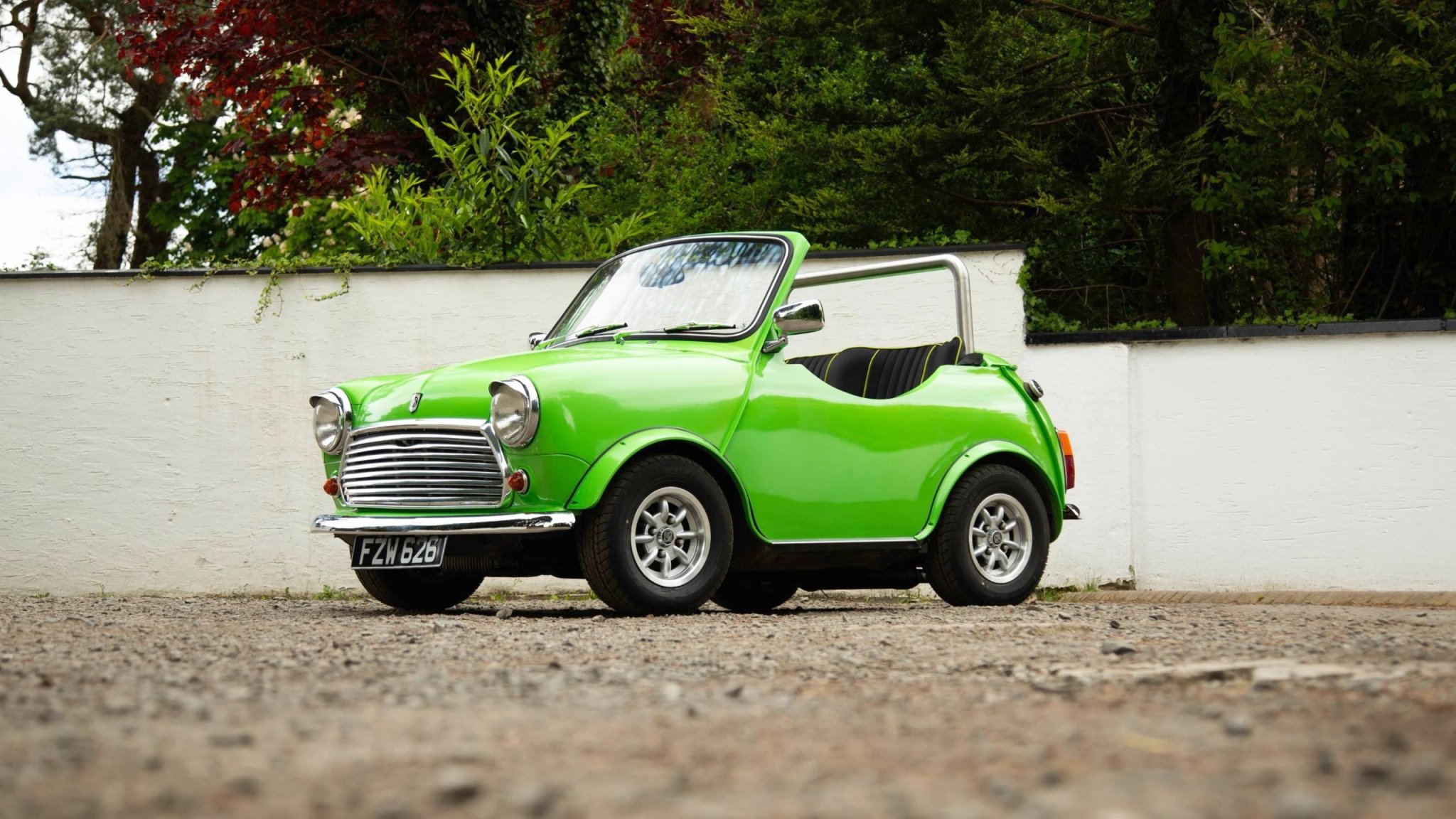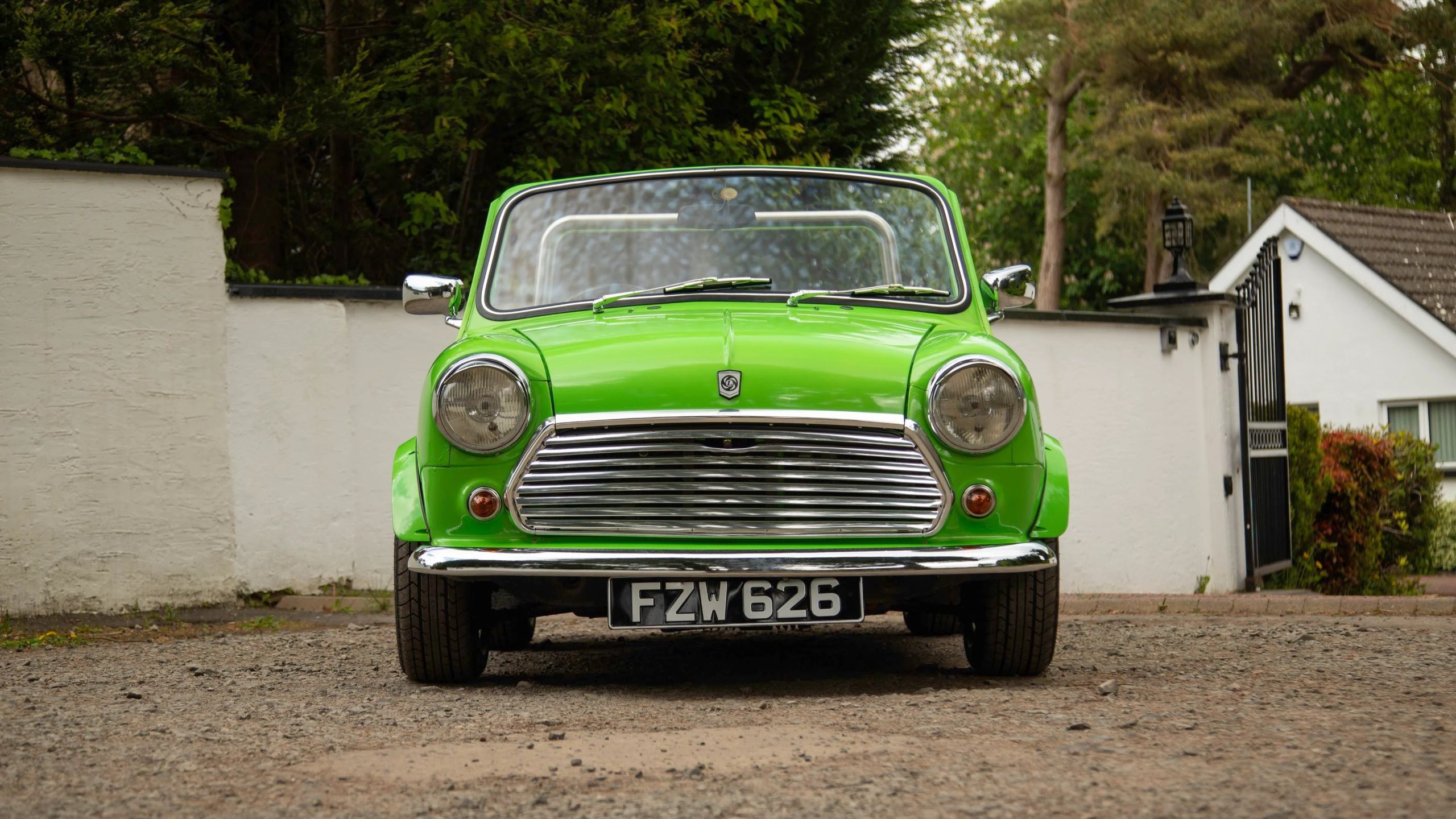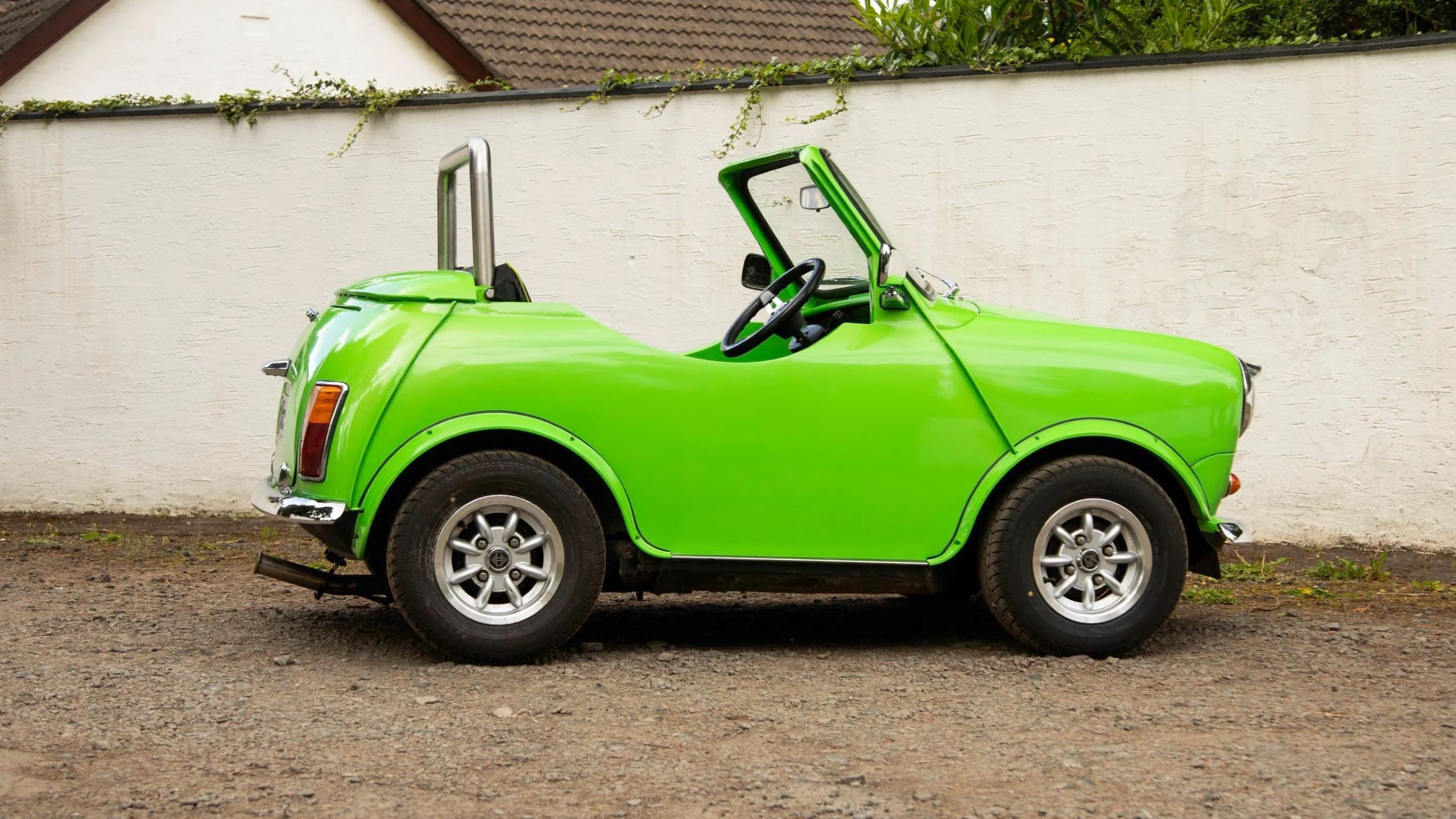
Today’s Minis have gotten too big for their britches. Thankfully, a classic Mini touring about town maintains the small car balance. But should BMW-owned Mini build a laughably offensive modern-day behemoth, there exists the “Shorty,” a truly miniature Mini that just so happens to be street legal.
Based on a vintage Mini Cooper, the “Shorty” is a highly modified version that sees the wheelbase significantly shortened and the roof chopped. According to Silodrome, the exact origins of this mini Mini are “lost to history,” and there seems to be no set standard for the mods.
How small the minimalist among Minis can get is genuinely based on preference. For example, there are two-seater classic Coopers galivanting around out there. At that point, they might even be tinier than go-karts. Because the only requirement is a classic Mini as the donor vehicle, the Shorty probably isn’t as uncommon as one might think. As Silodrome notes, the OG cutie was built from 1959 to 2000, when BMW introduced its version that carried the same name but with modern design and engineering.
More than 5.3 million original Minis were built over its four-decade lifespan. This conversion currently listed with Car & Classic happens to be a 1978 model.




The Leyland Mini was converted into a Shorty about 12 years ago, but then apparently stored in a barn for the last decade. Its current owner obtained the lime-green Leyland sometime in the past year. The vehicle has had plenty of recent work, but mostly of the cosmetic variety. The vehicle’s bumper, grille, and chrome trim are all new, and the interior is refreshed with new carpet and reupholstered seats. A new battery was installed, and the tires were replaced, likely from being an inactive barn resident for several years.
Although this Leyland Shorty Mini sports a bold color, I think any possible polarization is a moot point when you consider the vehicle proportions will turn heads regardless. The vehicle is currently located in Northern Ireland and said to have just 50,000 miles on the odometer. The listing shows an asking price of £5,500 ($7,445), but the seller is also open to offers.
This particular vehicle is “driving very well,” said the seller, but may need its handbrake cable replaced. How this thing drives is a fascinating thought. After all, you’re taking a vehicle that maxed at about 1,500 pounds to start, and then putting it on a crash diet. Shedding half the sheet metal (I’m guessing) might mean twice the fun (still guessing)? For that price, such a quirky little conversion might prove to be big, cheap fun.
